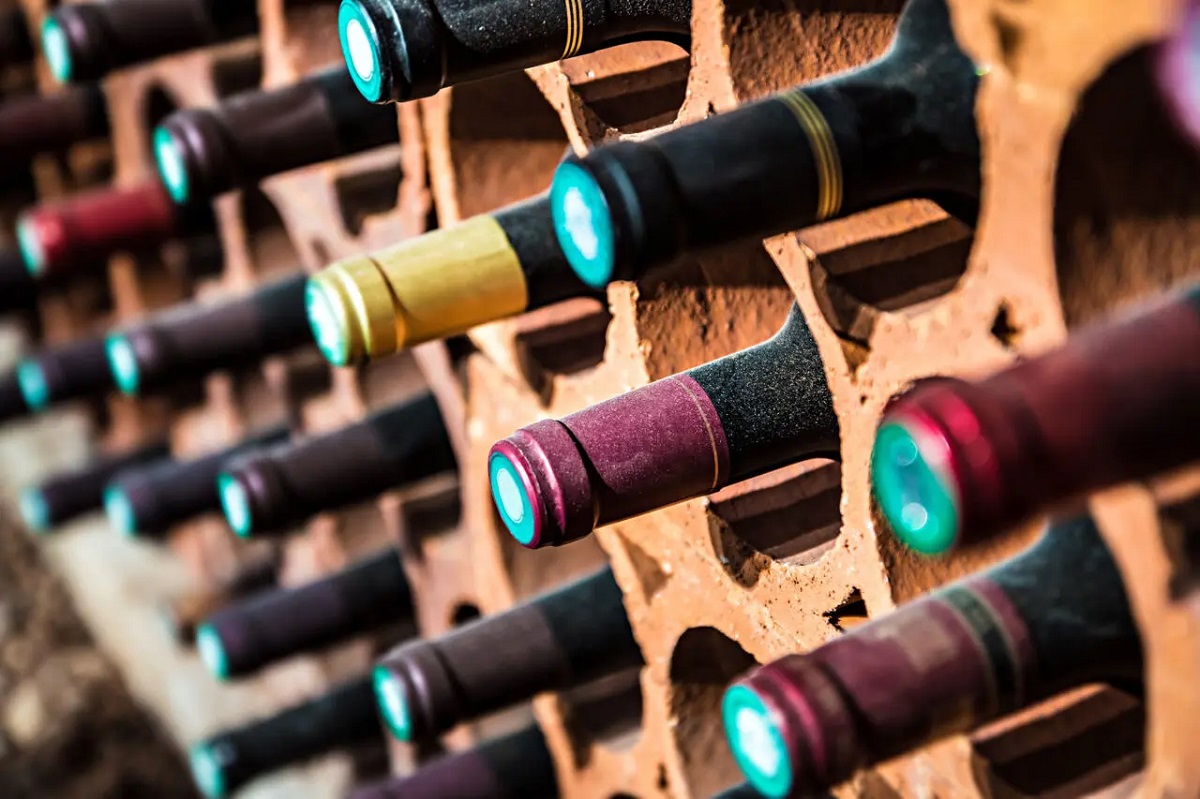

Articles
How To Store Wines
Modified: October 20, 2024
Discover the best techniques for storing wines in this informative article. Learn how to properly store wines to maintain their quality and taste.
(Many of the links in this article redirect to a specific reviewed product. Your purchase of these products through affiliate links helps to generate commission for Storables.com, at no extra cost. Learn more)
Introduction
Storing wine properly is crucial to preserving its flavor, aroma, and overall quality. Whether you’re a casual wine enthusiast or an avid collector, understanding the factors that affect wine storage is essential for maintaining the integrity of your wine collection.
Proper wine storage involves creating an environment that protects the wine from external elements such as temperature fluctuations, light exposure, and improper positioning. In this article, we will explore the key factors to consider when storing wines and provide valuable tips to help you maintain the optimal conditions for your collection.
Before diving into the specifics of wine storage, it’s important to note that not all wines require long-term aging. While some wines, like fine reds, benefit from aging, others, like whites and rosés, are meant to be enjoyed while young and fresh. Knowing the aging potential and ideal drinking window of each wine in your collection will guide you in determining the appropriate storage conditions.
The main factors to consider when storing wines are temperature, humidity, light exposure, bottle positioning, and air circulation. Maintaining stable and appropriate levels for these factors ensures the wine’s chemical reactions occur naturally, allowing it to develop complexity and mature gracefully over time.
Throughout this article, we will provide insights into the optimal conditions for each factor and discuss various methods and tools you can use to store your wine collection. Whether you have a small collection or a sizable cellar, these guidelines will help you create a suitable storage environment to protect your investment and enjoy your wines to their fullest potential.
Key Takeaways:
- Proper wine storage is essential for preserving the quality and flavors of your collection. Consider factors like temperature, humidity, and light exposure to create an optimal aging environment.
- Whether using wine racks, cellars, or alternative methods, actively monitor and maintain storage conditions. Organize and inventory your collection to ensure easy access and informed decision-making.
Read more: How To Store Wine Without A Wine Fridge
Factors to Consider Before Storing Wines
Before you start storing your wines, there are a few important factors to consider. These factors will help ensure that your wine remains in optimal condition and that you can enjoy it at its best when the time comes to open a bottle.
1. Temperature: One of the most critical factors in wine storage is temperature. Wine should be stored at a constant temperature between 45°F and 65°F (7°C and 18°C), with the ideal temperature being around 55°F (13°C). Fluctuations in temperature can cause the wine to expand and contract, impacting its flavor and potentially damaging the cork. Avoid storing wine in areas with extreme temperature variations, such as near windows or heating/cooling vents.
2. Humidity: Humidity levels are important for preserving the integrity of the cork and preventing it from drying out. The ideal humidity range for wine storage is between 50% and 80%. Low humidity levels can cause the cork to shrink, leading to oxidization and spoiling the wine. On the other hand, high humidity can encourage mold growth. Use a hygrometer to monitor humidity levels and consider using a humidifier or dehumidifier if necessary.
3. Light: Exposure to light, especially UV light, can damage the wine and affect its quality. UV rays can cause chemical reactions in the wine, leading to the development of off flavors and aromas. To prevent light damage, store wines in a dark area or use UV-blocking glass on wine cabinets or cellar doors. If your storage area is exposed to natural light, consider covering the bottles with a cloth or using wine sleeves to protect them.
4. Bottle Positioning: The position of the wine bottle plays a role in preventing the cork from drying out or becoming contaminated. Store wine bottles horizontally, especially those sealed with a natural cork. This keeps the cork moist and prevents air from entering the bottle. However, screw-top and synthetic cork-sealed bottles can be stored upright without affecting the wine’s quality.
5. Air Circulation: Adequate air circulation is essential to prevent musty odors and mold growth. Avoid storing wine bottles in a crowded or poorly ventilated area. Allow for proper airflow around the bottles, especially if you are using wine racks or shelving systems. A well-ventilated wine storage environment will help maintain the wine’s freshness and prevent any unwanted aromas from developing.
By considering these factors before storing your wines, you are taking the necessary steps to ensure that they will age gracefully and retain their quality. Providing the ideal conditions for your wine not only protects your investment but also enhances your overall tasting experience when the time comes to uncork a bottle.
Temperature and Humidity Requirements
Temperature and humidity are two crucial factors to consider when storing wines. Maintaining the right conditions for these factors ensures that your wine ages properly and maintains its quality over time.
Temperature: Wine should be stored at a consistent temperature between 45°F and 65°F (7°C and 18°C), with 55°F (13°C) being the ideal temperature for most wines. Fluctuations in temperature can cause the wine to expand and contract, leading to leakage or spoilage. It is important to note that different types of wines have varying temperature preferences. For example, red wines generally benefit from slightly warmer storage temperatures than whites and sparkling wines. Therefore, it is wise to consult a wine temperature chart or follow the recommendations provided by the producer or wine expert for specific wine varieties.
Extreme temperature conditions, whether hot or cold, can have detrimental effects on the wine’s flavors and aromas. High temperatures can accelerate the aging process, causing the wine to mature too quickly and lose its balance. Conversely, very low temperatures can slow down the development of the wine and affect its flavor profile.
Humidity: In addition to temperature, humidity plays a crucial role in wine storage. The ideal humidity range for wine storage is between 50% and 80%. Proper humidity levels prevent corks from drying out and maintain a tight seal, ensuring that no air enters the bottle. Dry corks can shrink and allow oxygen to seep into the bottle, resulting in oxidation and spoilage of the wine.
Excessively high humidity levels, above 80%, can promote the growth of mold and mildew, causing damage to labels and potentially affecting the quality of the wine. To monitor humidity, it is recommended to use a hygrometer, a specialized device that measures humidity levels. If the humidity in your storage space is too low, you can employ a humidifier to increase it. Conversely, if the humidity is too high, using a dehumidifier or ensuring proper ventilation can help regulate the level.
It is important to note that excessively high or low humidity levels for an extended period can potentially damage the wine. Therefore, maintaining ideal humidity conditions is vital for the longevity and quality of your wines.
By ensuring a stable and suitable temperature and humidity environment for your wine storage, you are creating the ideal conditions for your wines to age gracefully, develop complex flavors, and provide a delightful tasting experience.
Light and UV Protection
Light exposure, particularly ultraviolet (UV) light, can have a detrimental impact on the quality and longevity of your wines. Therefore, it’s important to protect your wine collection from direct and prolonged exposure to light.
UV Light: UV rays can initiate chemical reactions in wine, resulting in the degradation of flavors, aromas, and the wine’s overall quality. To safeguard your wines, store them in a dark environment away from direct sunlight or sources of UV light. Natural and artificial light sources can both emit damaging UV rays, so it’s important to take precautions regardless of the light source.
Windows and Sunlight: If you have a wine storage area with windows, it’s advisable to cover them with curtains, blinds, or UV-blocking film. This prevents sunlight from directly reaching the bottles. Keep in mind that some wine bottles are designed with dark-colored or UV-filtering glass, which provides some level of protection. However, it’s still best to avoid exposing wines to direct sunlight as much as possible.
UV-Blocking Glass and Sleeves: If you have a wine cabinet or cellar with glass doors, consider investing in UV-blocking glass. This type of glass filters out the harmful UV rays, offering increased protection for your wines. Alternatively, you can use UV-blocking wine sleeves or wraps to shield individual bottles from light exposure. These sleeves can be easily placed over the bottles and are an effective way to protect your wines, especially when you need to transport them or have limited light control in your storage area.
LED Lighting: If you have lighting fixtures in your wine storage area, opt for LED lights over incandescent or fluorescent bulbs. LED lights produce minimal heat and emit very low levels of UV rays. This type of lighting not only helps reduce the risk of light-induced wine damage but also provides energy-efficient illumination.
Remember that wine should be stored in a consistently dark environment. Excessive exposure to light, especially UV light, can degrade the wine’s quality, alter its flavors, and diminish its overall enjoyment. By taking measures to protect your wines from light damage, you are preserving their integrity and ensuring a delightful tasting experience when the time comes to uncork a bottle.
Proper Wine Bottle Positioning
The positioning of wine bottles during storage is an essential factor to consider in order to maintain the quality and longevity of your wines. Proper bottle positioning helps ensure that the wine remains in contact with the cork, preventing it from drying out and potentially spoiling the wine. The general rule of thumb is to store wine bottles horizontally, particularly those sealed with natural corks.
When wine bottles are stored horizontally, the wine inside keeps the cork moist, creating a tight seal and preventing air from entering the bottle. This is crucial for the aging process, as oxidation can significantly impact the flavors and aromas of the wine.
However, it is important to note that not all wine closures require horizontal storage. Wines that are sealed with screw caps or synthetic corks can be stored upright without compromising their quality. In fact, some experts recommend storing screw-cap wines upright, as this eliminates the risk of any potential interaction between the wine and the closure material.
For wines sealed with natural corks, horizontal storage is highly recommended. This is especially important for long-term aging, as it helps maintain the integrity of the cork and the wine within. Naturally, the wine may come into contact with the cork, allowing it to remain hydrated and ensuring a proper seal.
Aside from preventing the cork from drying out, proper bottle positioning also aids in the sediment settling process. For older wines, particularly reds, sediment can naturally form over time. By storing the bottles horizontally, the sediment has a larger surface area to settle, minimizing the chance of disturbance when the bottle is eventually opened.
When organizing your wine collection, consider using wine racks, holders, or shelving systems designed to store bottles horizontally. These storage solutions help keep the bottles secure while allowing easy access to your collection.
Remember to handle wine bottles with care when moving or organizing them. Sudden or rough movements can disturb the sediment and affect the wine’s clarity and overall quality. Always handle the bottles by the base or neck and avoid shaking them.
By ensuring proper wine bottle positioning during storage, you are contributing to the longevity and quality of your wines. Storing bottles horizontally, particularly those sealed with natural corks, helps preserve the cork’s integrity and ensures that your wines age gracefully, ready to be enjoyed when the time is right.
Read more: How To Store Port Wine
Importance of Air Circulation
When it comes to proper wine storage, air circulation is an often overlooked but crucial factor to consider. Adequate air circulation helps maintain the optimal conditions for your wines, ensuring their longevity, flavor development, and overall quality. Without proper air circulation, unwanted odors, mold growth, and even deterioration of the wine can occur.
Here are a few reasons why air circulation is important in wine storage:
1. Preventing Musty Odors: Stagnant air can create a musty or unpleasant odor in your wine storage area. Adequate ventilation promotes fresh air circulation, preventing any lingering odors from invading your wines. It also helps dissipate any natural odors that may come from the wine itself, preventing them from concentrating and affecting nearby bottles.
2. Reducing Mold and Mildew: Insufficient air circulation can create a damp environment that encourages mold and mildew growth. These fungi are not only unsightly but can also damage labels and potentially affect the quality of the wine. Proper air circulation helps maintain a dry and ventilated space, reducing the risk of mold and mildew infestation.
3. Cooling and Temperature Regulation: Good air circulation helps regulate temperature and prevent heat pockets in your storage area. It allows the cool air to reach all parts of the space, ensuring consistent temperatures throughout. This is especially important if you’re using a wine cellar or cabinet with a cooling system to maintain the desired temperature range.
4. Preventing Bottle Sweating: Bottle sweating occurs when there is a significant difference in temperature between the wine and its surrounding environment. In high humidity conditions, inadequate air circulation can lead to moisture buildup on the bottle’s surface, resulting in condensation and potential label damage. Proper air circulation helps mitigate bottle sweating, ensuring the labels remain intact and legible.
To achieve proper air circulation in your wine storage area, follow these tips:
– Avoid Overcrowding: Give your wine bottles enough space to allow air to circulate around them. Avoid packing them tightly or stacking them in a way that restricts airflow.
– Use Proper Wine Racks or Shelving Systems: Invest in wine racks or shelving systems that are designed to promote airflow around the bottles. Choose ones with open designs or slatted shelves that allow air to circulate freely.
– Maintain a Clean Environment: Regularly clean your wine storage area, including shelves, racks, and any ventilation systems. Dust and debris can accumulate over time, hindering air circulation and potentially affecting the quality of your wines.
– Consider Ventilation Systems: Depending on the size of your wine storage area, you may want to install passive or active ventilation systems to enhance air circulation. These systems can help maintain proper airflow and prevent any stagnant air pockets.
By ensuring proper air circulation, you are creating an optimal storage environment for your wines. This will help maintain their quality, prevent unwanted elements, and ultimately enhance your overall wine tasting experience.
Wine Storage Location Options
When it comes to storing your wine collection, choosing the right storage location is essential to ensure its longevity and quality. There are various options available, each with its own advantages and considerations. Here are some common wine storage location options to consider:
1. Wine Racks and Shelving Systems: Wine racks and shelving systems are a popular choice for wine enthusiasts with limited space. They come in various sizes, styles, and materials, allowing you to customize your storage solution based on your collection size and aesthetic preferences. Wine racks and shelves are designed to hold bottles horizontally, ensuring the cork remains moist and the wine stays in contact with it.
2. Wine Cellars: Wine cellars offer the ideal storage environment for wine enthusiasts with larger collections. They are typically designed to maintain consistent temperature and humidity levels, often using cooling systems to achieve the desired conditions. Wine cellars can be built as part of a home renovation or added to an existing basement or dedicated room. They provide ample space for organizing and storing your wines, allowing for easy access and a cellar-like ambiance.
3. Wine Cabinets: For those with a smaller collection or limited space, wine cabinets offer a convenient and stylish option. These cabinets are designed with temperature and humidity control features to create an environment conducive to wine storage. They often come with adjustable racks and shelves, allowing you to accommodate different bottle sizes. Wine cabinets are available in various sizes, styles, and materials, making it easier to find one that fits your needs and complements your home décor.
4. Wine Coolers and Refrigerators: Wine coolers and refrigerators are an excellent option for those who want to store a smaller number of bottles at the ideal serving temperature. These appliances provide temperature control and often include adjustable shelves to accommodate different bottle sizes. Wine coolers can range from compact countertop models to larger freestanding or built-in units. They are a practical choice for wine enthusiasts who enjoy having a selection of wines readily available at the perfect temperature.
5. Alternative Wine Storage Methods: If you don’t have access to dedicated wine storage options, there are alternative methods to consider. For example, you can use a wine storage locker facility that provides temperature and humidity-controlled spaces specifically designed for wine storage. Additionally, some wine collectors utilize temperature-controlled storage units or repurpose closet spaces with proper temperature and humidity regulation.
When choosing a wine storage location, it’s important to consider factors such as available space, budget, collection size, and the desired aging potential of your wines. Remember to prioritize proper temperature, humidity, and light control to ensure the optimal storage conditions for your collection.
By carefully selecting the storage location that suits your needs and investing in the right equipment or infrastructure, you can create a storage environment that preserves the integrity of your wines and allows you to enjoy them to their fullest potential.
Wine Racks and Shelving Systems
Wine racks and shelving systems are versatile and practical storage options for wine enthusiasts of all levels. These storage solutions offer convenience, organization, and aesthetics while keeping your wine collection readily accessible. Let’s delve into the benefits and considerations of using wine racks and shelving systems:
Benefits of Wine Racks and Shelving Systems:
1. Efficient Use of Space: Wine racks and shelving systems are designed to maximize space utilization. They come in various sizes and configurations, allowing you to choose the one that best fits your collection and available space. Whether you have a small corner or a dedicated wine room, wine racks and shelves can be tailored to accommodate your needs.
2. Proper Bottle Positioning: Wine racks and shelving systems are designed to store bottles horizontally, keeping the wine in contact with the cork. This positioning helps prevent the cork from drying out, maintaining a tight seal and protecting the wine from oxygen exposure. Proper bottle positioning is particularly important for wines sealed with natural corks, which require storage on their sides.
3. Easy to Organize: Wine racks and shelves provide a systematic way to organize your wine collection. With designated spaces for each bottle, you can easily categorize and locate specific wines. This not only saves time but also adds an aesthetic appeal to your storage area, showcasing your collection like a display.
4. Adaptability: Wine racks and shelving systems are available in a variety of styles, materials, and sizes to suit different preferences and collection sizes. Whether you prefer a traditional wooden wine rack or a modern metal shelving system, there are countless options to match your aesthetic and functional requirements.
Considerations for Wine Racks and Shelving Systems:
1. Space and Capacity: Before purchasing a wine rack or shelving system, consider the amount of space you have available and the size of your wine collection. Measure the dimensions of the area where you plan to install the rack or shelves to ensure a proper fit. Additionally, take into account your collection’s growth potential, as a rack that suits your current needs may become inadequate in the future.
2. Material and Construction: Choose the material and construction of your wine rack or shelving system carefully. Common materials include wood, metal, and acrylic. Wooden wine racks offer a classic look and are known for their durability. Metal racks offer a contemporary feel and are often more space-efficient. Acrylic racks provide a modern and sleek appearance. Consider factors such as style, maintenance, and stability when selecting the material.
3. Temperature and Humidity Control: While wine racks and shelving systems provide excellent organization, they may not offer built-in temperature and humidity control. Ensure that the area where you install the racks has adequate temperature and humidity regulation to maintain the optimal storage conditions for your wines. Additionally, consider using a hygrometer and thermometer to monitor environmental conditions.
4. Accessibility: Consider how easy it is to access and retrieve bottles from the wine rack or shelving system. Some designs offer smooth gliding mechanisms or sliding shelves, allowing you to access bottles without disrupting the rest of the collection. This accessibility can be particularly beneficial if you have a large collection or plan to store wines for long-term aging.
Wine racks and shelving systems are practical and visually appealing storage solutions for wine enthusiasts. They offer efficient organization, proper bottle positioning, and adaptability to suit different spaces and collection sizes. By investing in a high-quality wine rack or shelving system, you create a storage environment that not only protects your wines but also showcases your collection with pride.
Store wine in a cool, dark place with a consistent temperature, ideally between 45-65°F. Keep bottles on their side to keep the cork moist and prevent oxidation. Avoid storing in the kitchen or near appliances that generate heat.
Wine Cellars and Wine Cabinets
For wine enthusiasts with a passion for collecting and aging wines, wine cellars and wine cabinets are excellent options for creating a dedicated storage environment. These storage solutions provide precise temperature and humidity control, ensuring optimal conditions for long-term wine storage. Let’s explore the benefits and considerations of wine cellars and wine cabinets:
Wine Cellars:
Benefits:
– Temperature and Humidity Control: Wine cellars offer the advantage of precise temperature and humidity control, allowing you to create the optimal environment for aging wines. They are designed with cooling units or systems that maintain stable temperatures between 45°F and 65°F (7°C and 18°C), with humidity levels between 50% and 80%. This controlled environment supports the gradual development of complex flavors and aromas in wines over time.
– Ample Storage Space: Wine cellars provide ample space for storing a large wine collection. Whether you choose to build a custom cellar or install pre-fabricated wine cellar units, there are options available to accommodate collections of various sizes. Wine cellars often feature modular racking systems that allow for easy organization and efficient use of space.
– Prestigious Presentation: Wine cellars add a touch of elegance and prestige to your home. Whether housed in a dedicated room or incorporated into an existing basement, wine cellars can be designed with tasteful decor elements and lighting to create a captivating display for your collection.
Considerations:
– Space and Budget: Building or installing a wine cellar requires dedicated space and a suitable budget. It’s important to assess the available space in your home and consult with professionals to determine the feasibility and cost of creating a wine cellar. Factors such as construction, insulation, cooling system, and decor will contribute to the overall expenses.
– Investment Value: Wine cellars are a long-term investment, primarily suited for collectors committed to aging wines. Consider the value you place on long-term wine storage and aging potential before committing to the construction of a wine cellar. It’s important to assess your collection size, buying habits, and overall wine appreciation goals to determine if a cellar is the best option for you.
Wine Cabinets:
Benefits:
– Temperature and Humidity Control: Wine cabinets provide a controlled environment to maintain the ideal storage conditions for your wines. They come with built-in cooling systems that regulate the temperature, typically within the range of 45°F to 65°F (7°C and 18°C), and control humidity levels. Wine cabinets offer a more compact option for temperature and humidity control compared to wine cellars.
– Flexible Placement: Wine cabinets are versatile and can be placed in various areas of your home. They are often freestanding units that can be conveniently positioned in your living room, dining area, or kitchen. This makes them easily accessible for entertaining purposes and adds a stylish element to your home decor.
– Customization Options: Wine cabinets come in various sizes, styles, and designs, allowing you to choose the one that best suits your aesthetic preferences and storage needs. Some models offer adjustable shelving, allowing you to accommodate different bottle sizes or adapt the interior layout as your collection evolves.
Considerations:
– Collection Size: Wine cabinets are suitable for smaller to medium-sized collections. Consider the number of bottles you currently have or plan to store and choose a cabinet that provides sufficient capacity to accommodate your collection comfortably.
– Location and Ventilation: When placing a wine cabinet, ensure it is positioned in a well-ventilated area that allows heat dissipation from the cooling system. Avoid placing it near heat sources or in direct sunlight to maintain optimal temperature control.
– Budget: Wine cabinets vary in price depending on the size, features, and quality. Determine your budget and consider factors such as energy efficiency and insulation when choosing a wine cabinet.
Whether you opt for a wine cellar or a wine cabinet, both options offer controlled storage environments to preserve the quality and aging potential of your wines. Assess your collection size, long-term storage goals, available space, and budget to make an informed decision on which option suits your needs and expectations.
Read more: How To Store Ice Wine
Wine Coolers and Refrigerators
For wine enthusiasts who enjoy having a selection of wines readily available at the perfect serving temperature, wine coolers and refrigerators are an excellent storage option. These appliances offer temperature control to ensure your wines are stored and served at their optimal conditions. Let’s explore the benefits and considerations of wine coolers and refrigerators:
Benefits:
– Temperature Control: Wine coolers and refrigerators are designed to provide precise temperature control for wine storage. They allow you to set and maintain the ideal temperature range for your wines, typically between 45°F and 65°F (7°C and 18°C), depending on the types of wines you store. This ensures that your wines are kept at the perfect temperature for both short-term storage and immediate enjoyment.
– Convenience and Accessibility: Wine coolers and refrigerators offer convenience by keeping your wines easily accessible. These appliances allow you to store your collection in your living space, kitchen, or any area where you entertain guests. You can conveniently select and serve wines at the desired temperature without the need for additional storage trips.
– Flexibility and Adaptability: Wine coolers and refrigerators come in various sizes and styles, ranging from compact countertop models to larger freestanding or built-in units. This offers flexibility in finding the right fit for your storage needs and available space. Some models also feature adjustable shelves or removable racks to accommodate different bottle sizes and allow for flexible storage arrangements.
Considerations:
– Capacity: Consider the size and capacity of the wine cooler or refrigerator based on your collection size and future storage needs. Assess the number of bottles you typically have or plan to keep on hand for immediate consumption. Choose a model that can accommodate your collection comfortably, allowing room for growth and variety.
– Temperature Zones: Some wine coolers and refrigerators offer multiple temperature zones, which enable you to store different types of wines at their respective ideal temperatures. This is particularly beneficial if you enjoy a variety of wines, including both reds and whites. Consider whether separate temperature zones are important to you when selecting a model.
– Noise and Vibration: Wine coolers and refrigerators vary in terms of noise and vibration levels. Consider the noise tolerance in the area where you plan to place the cooler or refrigerator, especially if it’s near living or sleeping spaces. Look for models that feature low vibration mechanisms to ensure minimal disturbance to the wine during storage.
– Energy Efficiency: Consider the energy efficiency of the wine cooler or refrigerator to minimize power consumption and operating costs. Look for models that have an Energy Star rating or other energy-efficient features to save both energy and money in the long run.
Wine coolers and refrigerators provide accessible and controlled storage options for wine enthusiasts who value the convenience of having their wines readily available at the desired serving temperature. Assess your collection size, available space, and preferences for temperature control and adaptability to choose the right model that aligns with your needs and enhances your wine enjoyment.
Alternative Wine Storage Methods
While wine racks, cellars, cabinets, and coolers are popular storage options, there are alternative methods available for wine enthusiasts who may have limited space, budget constraints, or unique circumstances. These alternatives can provide suitable storage conditions with a bit of creativity and resourcefulness. Let’s explore some alternative wine storage methods:
1. Wine Storage Lockers: If you do not have space or the means for a dedicated wine storage area, a wine storage locker facility can be a viable option. These facilities offer temperature-controlled units specifically designed for wine storage. You can usually rent a locker with varying sizes to accommodate your wine collection. Wine storage lockers provide a secure and monitored environment for your wines while allowing convenient access whenever you need to retrieve or add to your collection.
2. Temperature-Controlled Storage Units: If you do not have the ability to create a wine cellar or invest in a wine cooler, you may consider utilizing a temperature-controlled storage unit. These units typically have ambient temperature control and can provide suitable conditions for short- to mid-term wine storage. Be sure to select a unit with a temperature range that aligns with your desired storage conditions to prevent temperature fluctuations that can adversely affect the wine’s quality.
3. Repurposed Closets or Cabinets: If you have a spare closet or cabinet in your home that can be modified, you can repurpose it as a wine storage area. Make sure the space is well-insulated, away from direct sunlight, and free from temperature fluctuations. Install a thermometer and hygrometer to monitor temperature and humidity levels. Utilize wine racks or adjustable shelving to maximize space and organize your wine bottles. This option allows you to utilize existing space effectively and can be a cost-effective alternative to dedicated storage solutions.
4. Understairs Storage: For those with limited space, consider utilizing the space under the stairs as a wine storage area. With proper insulation and ventilation, this area can offer a naturally cool and dark environment that is suitable for wine storage. Install racks or shelves specifically designed for wine storage to keep the bottles organized and minimize the risk of damage. Be sure to control humidity levels and monitor temperature to maintain the desired storage conditions.
5. DIY Insulated Wine Storage: If you are handy and enjoy DIY projects, you can create your own insulated wine storage area. This could involve converting a small room, building a custom cabinet, or constructing an insulated enclosure within an existing space. Use insulation materials to create a thermally stable environment and incorporate temperature and humidity control devices for added precision. Ensure proper ventilation and consider installing a cooling unit if necessary.
When exploring alternative wine storage methods, it’s important to prioritize the wine’s storage requirements, such as temperature, humidity, and light control. Evaluate the space, budget, and long-term storage goals to determine the most suitable alternative method for your wine collection.
Remember, the key is to maintain stable and appropriate storage conditions to preserve the quality and aging potential of your wines. With a bit of ingenuity and attention to detail, you can create a storage solution that protects your wines and allows you to enjoy them to their fullest.
Tips for Long-Term Wine Storage
Long-term wine storage requires careful attention to detail to ensure that your wines age gracefully and maintain their quality over time. Whether you are storing wines with the intention of aging them for several years or simply want to preserve their flavors and aromas, here are some valuable tips to enhance your long-term wine storage:
1. Ideal Storage Conditions:
– Stable Temperature: Maintain a constant temperature between 45°F and 65°F (7°C and 18°C), with 55°F (13°C) as the ideal temperature for most wines. Avoid significant temperature fluctuations, as they can accelerate the aging process and impact the wine’s quality.
– Proper Humidity: Aim for a humidity level between 50% and 80% to prevent the corks from drying out or mold/mildew growth. Use a hygrometer to monitor humidity levels and consider using a humidifier or dehumidifier to regulate the environment if necessary.
– Minimal Light Exposure: Protect wines from direct and prolonged exposure to light, especially UV rays. Store wines in a dark area, away from windows or sources of UV light. If the storage area has natural light, consider covering the bottles or using UV-blocking glass or sleeves to shield them.
– Proper Positioning: Store wine bottles horizontally, particularly those sealed with natural corks. This keeps the cork moist and prevents air from entering the bottle. However, wines sealed with screw caps or synthetic corks can be stored upright without compromising quality.
2. Choose the Right Storage Option:
– Consider Dedicated Wine Storage: If you have a sizable collection or plan to age wines for an extended period, explore dedicated storage options like wine cellars, wine cabinets, or wine lockers. These options provide precise temperature and humidity control, ensuring the optimal conditions for long-term storage.
– Select the Appropriate Cooling Equipment: If you opt for a wine cooler or refrigerator, choose one with the necessary temperature control capabilities and sufficient capacity to accommodate your collection. Look for models that offer a wide temperature range and adjustable shelving to adapt to your storage needs.
3. Keep Wine Bottles Still and Undisturbed:
– Avoid Vibrations: Minimize vibrations in the storage area, as they can negatively affect wine quality. Place wines away from appliances or machinery that produce vibrations. Vibrations can disturb sediment in older wines and impact the aging process.
4. Regularly Inspect and Maintain:
– Check for Cork Moisture: Periodically inspect the corks for signs of drying out or leakage. A moist or swollen cork indicates optimal storage conditions, whereas a dry or shriveled cork may suggest exposure to inadequate humidity levels.
– Keep the Storage Area Clean: Regularly clean the storage area, including racks, shelves, and other storage equipment. Dust and debris can accumulate and affect the wine’s quality over time.
– Monitor Storage Conditions: Continuously monitor the temperature and humidity levels using thermometers and hygrometers. Make adjustments as necessary to maintain the ideal storage conditions. Consider investing in a temperature and humidity monitoring system for larger wine cellars or storage areas.
5. Rotate and Organize Your Collection:
– Practice First-In, First-Out (FIFO): Implement a system to rotate your wines based on their aging potential. This ensures that the older wines are consumed or checked for readiness first, avoiding the risk of neglecting wines that may be reaching their peak.
– Organize by Region or Varietal: Group wines by region, varietal, or other categories that align with your preferences. This organization method helps you locate specific bottles easily and maintain a sense of inventory control.
By following these tips, you can establish the ideal conditions for long-term wine storage, allowing your wines to age gracefully and develop complex flavors and aromas. Proper storage practices preserve your investment and enhance your enjoyment of each bottle when the time comes to uncork and savor the fruits of patience and care.
Monitoring and Maintaining Wine Storage Conditions
Monitoring and maintaining the conditions of your wine storage area is essential to ensure the longevity and quality of your wines. By regularly checking and making necessary adjustments, you can create an environment that supports proper aging and protects your investment. Here are some key tips for monitoring and maintaining wine storage conditions:
1. Use Temperature and Humidity Monitoring Devices:
– Thermometer: Place a reliable thermometer in your wine storage area to monitor the temperature consistently. Choose a thermometer that provides accurate readings within the desired range of 45°F to 65°F (7°C and 18°C). Regularly check the temperature to identify any fluctuations that may require adjustments to your cooling or heating systems.
– Hygrometer: A hygrometer measures the humidity level in your storage area. Maintain a humidity range of 50% to 80% to prevent corks from drying out or mold and mildew growth. Place the hygrometer in a central location to obtain accurate humidity readings and adjust humidity levels using appropriate humidifiers or dehumidifiers as needed.
2. Check for Light Exposure:
– Inspect for UV Light: Regularly inspect your wine storage area for potential UV light exposure. Examine windows, doors, and any openings in the vicinity. If you notice excessive sunlight or UV rays reaching the bottles, take measures to block or filter the light. Consider using UV-blocking film, curtains, or shades to protect your wines.
– Monitor Artificial Lighting: Be aware of the type of artificial lighting in your storage area. Avoid using lights that emit heat or UV rays, as they can impact the wine’s quality. Opt for LED lights, which emit lower levels of heat and UV radiation, reducing the risk of light-induced wine damage.
3. Inspect for Cork Integrity:
– Check Cork Moisture: Regularly inspect the corks of stored wines for signs of dryness or leakage. A moist or swollen cork indicates that the storage conditions are sufficient, while a dry or shriveled cork suggests inadequate humidity levels. Replace any damaged or compromised corks to maintain the quality and integrity of the wine.
4. Organize and Inventory Your Collection:
– Organization: Maintain an organized system for your wine collection. Label racks or shelves to easily locate specific bottles and rotate wines based on their aging potential. This organizational approach ensures that wines are consumed or checked for readiness in a timely manner, preventing wines from being overlooked or forgotten.
– Inventory: Keep track of your wine inventory and update it regularly. This allows you to monitor the age and quantity of your wines, ensuring that you can plan for future purchases or consumption. Utilize inventory management tools, apps, or spreadsheets to keep a detailed record of your collection.
5. Regular Maintenance of Equipment:
– Cleaning: Routinely clean your wine racks, shelving systems, cooling units, and any other equipment in your storage area. Dust and debris can accumulate over time and impact the quality of your wines. Use a soft cloth or brush to remove dirt and regularly check for any signs of mold or pests.
– Preventative Maintenance: Schedule regular maintenance for your cooling systems to ensure they are working efficiently. Consult professionals to inspect, clean, and calibrate your cooling units to maintain the desired temperature range. Replace filters, clean condenser coils, and address any maintenance issues promptly to avoid disruptions in temperature control.
By closely monitoring and maintaining the conditions of your wine storage area, you can provide the ideal environment for your wines to age gracefully. Regular temperature and humidity checks, along with proper organization and maintenance, will help protect your investment and ensure that each bottle is enjoyed at its best when the time comes to uncork and savor its flavors.
Read more: How To Store Leftover Wine
Organizing and Inventorying Your Wine Collection
Organizing and inventorying your wine collection is crucial for efficient storage management and easy access to your favorite bottles. A well-organized collection allows you to keep track of your wines’ age, varietals, regions, and desired drinking windows. Here are some valuable tips to help you organize and inventory your wine collection:
1. Categorize and Sort:
– Organize by Varietal or Region: Group your wines by varietal (such as Chardonnay, Cabernet Sauvignon, or Pinot Noir) or region (such as Bordeaux, Napa Valley, or Rioja). This method allows you to easily locate specific wines when desired and makes it easier to compare and contrast different styles and characteristics within the same category.
– Create Drinking Windows: Determine the ideal drinking windows for each wine in your collection. This refers to the recommended period for enjoying the wine at its peak quality. Assign drinking windows to your wines and categorize them accordingly. This will help you prioritize which bottles to consume sooner and which ones can continue aging in your collection.
2. Utilize Wine Racks and Shelving Systems:
– Invest in Suitable Wine Racks: Choose wine racks or shelving systems that complement your storage space and provide adequate capacity for your collection. Consider factors like bottle size, storage configuration, and whether you want to display your collection or keep it out of direct light. Select racks that allow you to store bottles horizontally, ensuring proper cork moisture and airtight seals.
– Label Each Shelf or Rack: Assign labels to each section of your wine racks or shelves to indicate the specific categories or regions they contain. This makes it effortless to find particular wines and maintain an organized display of your collection.
3. Inventory Management Tools and Apps:
– Use Digital or Physical Tools: Take advantage of various inventory management tools, apps, or templates available. These tools allow you to enter and track your wine collection details, including vintage, producer, quantity, and drinking windows.
– Update Regularly: Dedicate time and effort to regularly update your inventory. Whenever you purchase new wines or consume existing ones, update the inventory to reflect the changes. This ensures that your collection information remains accurate and helps you plan future purchases and consumption effectively.
4. Consider Wine Cellar Management Software:
– Explore Wine Cellar Management Software: If you have a sizable and expanding collection, consider using specialized wine cellar management software. These programs offer advanced features such as barcode scanning, cellar mapping, and wine database integration. They provide comprehensive cellar management capabilities and sophisticated tracking options.
– Backup Data: When utilizing software or apps for cellar management, ensure you regularly back up your data to prevent loss or damage. Online cloud storage, external hard drives, or physical printouts can serve as additional backup options.
5. Regular Reviews and Maintenance:
– Perform Regular Inventory Checks: Schedule periodic reviews of your wine inventory to assess the condition, maturity, and potential drinking windows of your bottles. This helps you identify wines that may require consumption in the near future and avoid any missed opportunities to enjoy them at their best.
– Maintain Physical Organization: Regularly organize your wine racks and shelves to ensure bottles are properly positioned and labels are visible. This prevents bottle displacement or damage and optimizes the aesthetics and accessibility of your wine collection.
By implementing effective organizing and inventorying strategies, you can maximize the enjoyment and management of your wine collection. A well-organized and documented collection allows you to easily access your wines, make informed decisions about which bottles to consume, and plan for future additions to your cellar. Whether you prefer digital tools or physical records, finding a method that suits your needs will enhance the overall experience of building and maintaining your wine collection.
Conclusion
Proper wine storage is crucial to preserving the quality, flavors, and aromas of your wines. By considering factors such as temperature, humidity, light exposure, bottle positioning, and air circulation, you can create an optimal environment for your wine collection to age gracefully. Whether you have a small collection or a large cellar, there are storage options available to suit your needs and preferences.
Wine racks and shelving systems provide practical and efficient solutions, allowing you to organize and display your wines while maintaining proper bottle positioning. Wine cellars and wine cabinets offer dedicated storage spaces with precise temperature and humidity control, ensuring optimal conditions for long-term aging. Wine coolers and refrigerators are convenient for those who enjoy immediate access to their wines at the perfect serving temperature.
If you don’t have access to dedicated wine storage options, there are alternative methods to consider, such as wine storage lockers, temperature-controlled storage units, repurposed closets or cabinets, and DIY insulated storage areas. These alternatives can provide suitable conditions with a bit of creativity and resourcefulness.
Regardless of the storage option you choose, it is important to actively monitor and maintain the storage conditions of your wines. Regularly check temperature and humidity levels, inspect for light exposure, and ensure proper bottle positioning. Organize and inventory your collection, utilizing tools, software, or physical records to easily track and manage your wines.
By following these guidelines, you can create an environment that safeguards your wines and allows them to age gracefully, ready to be enjoyed at their peak. Whether you’re a casual wine drinker or a passionate collector, proper wine storage ensures that every bottle is a delight to uncork and savor.
So, take the time to invest in the right storage solutions, pay attention to the storage conditions, and stay organized. Your wine collection will thank you as it continues to develop in complexity and provide you with countless enjoyable experiences for years to come.
Frequently Asked Questions about How To Store Wines
Was this page helpful?
At Storables.com, we guarantee accurate and reliable information. Our content, validated by Expert Board Contributors, is crafted following stringent Editorial Policies. We're committed to providing you with well-researched, expert-backed insights for all your informational needs.
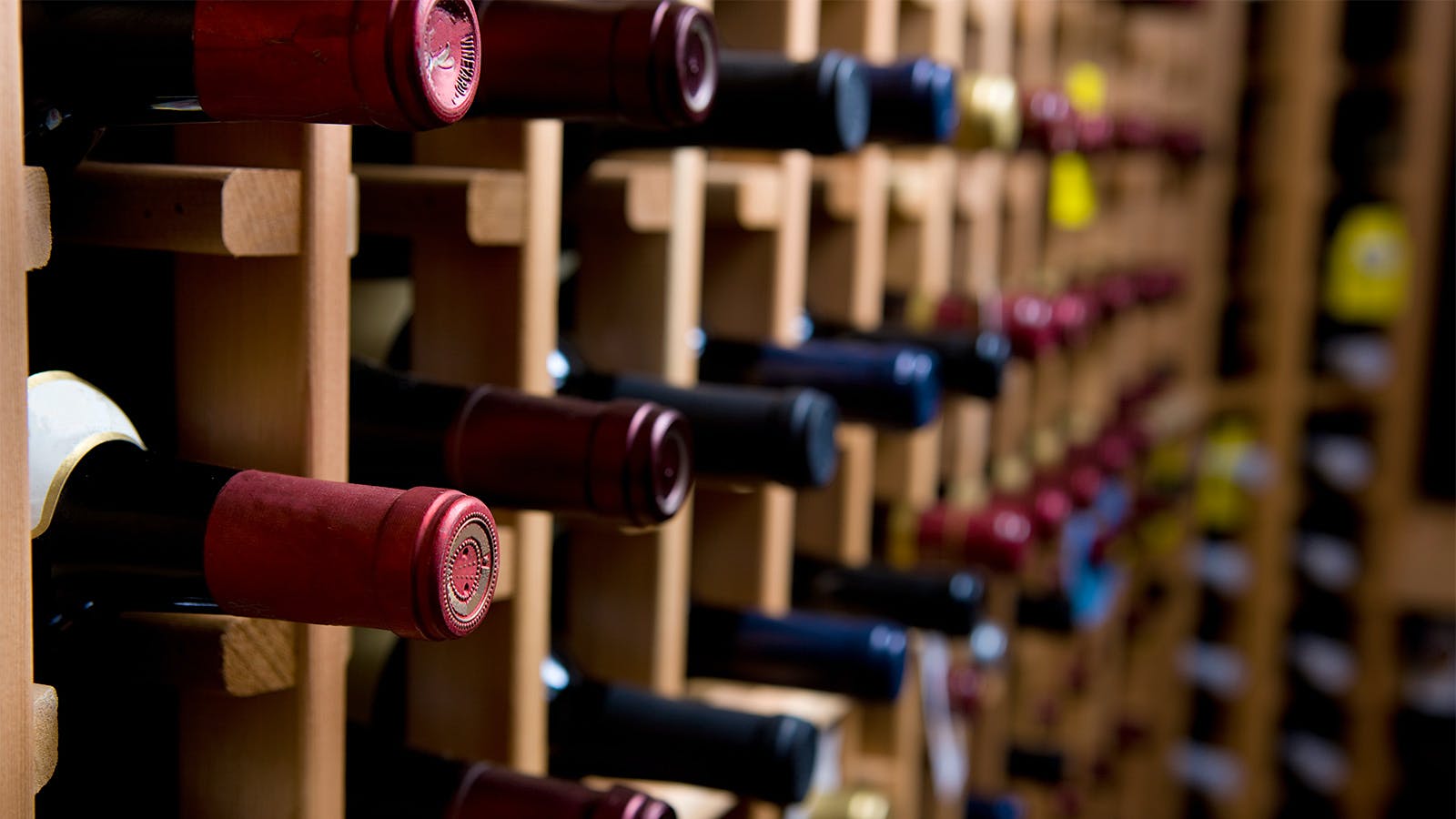
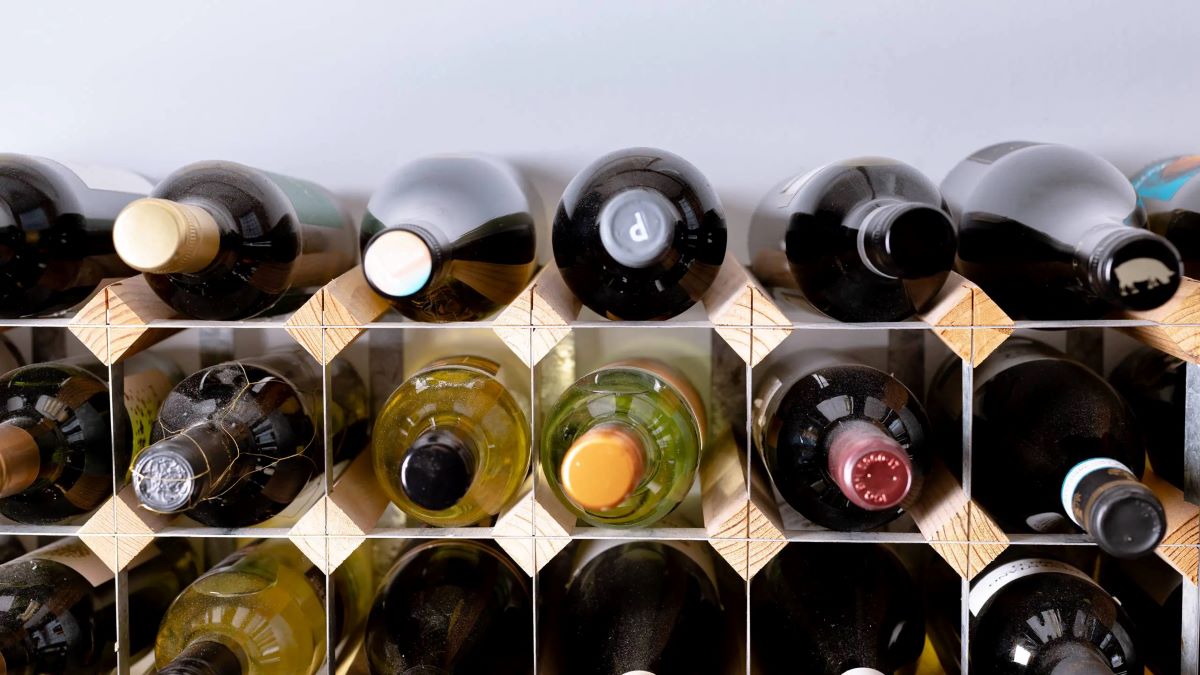
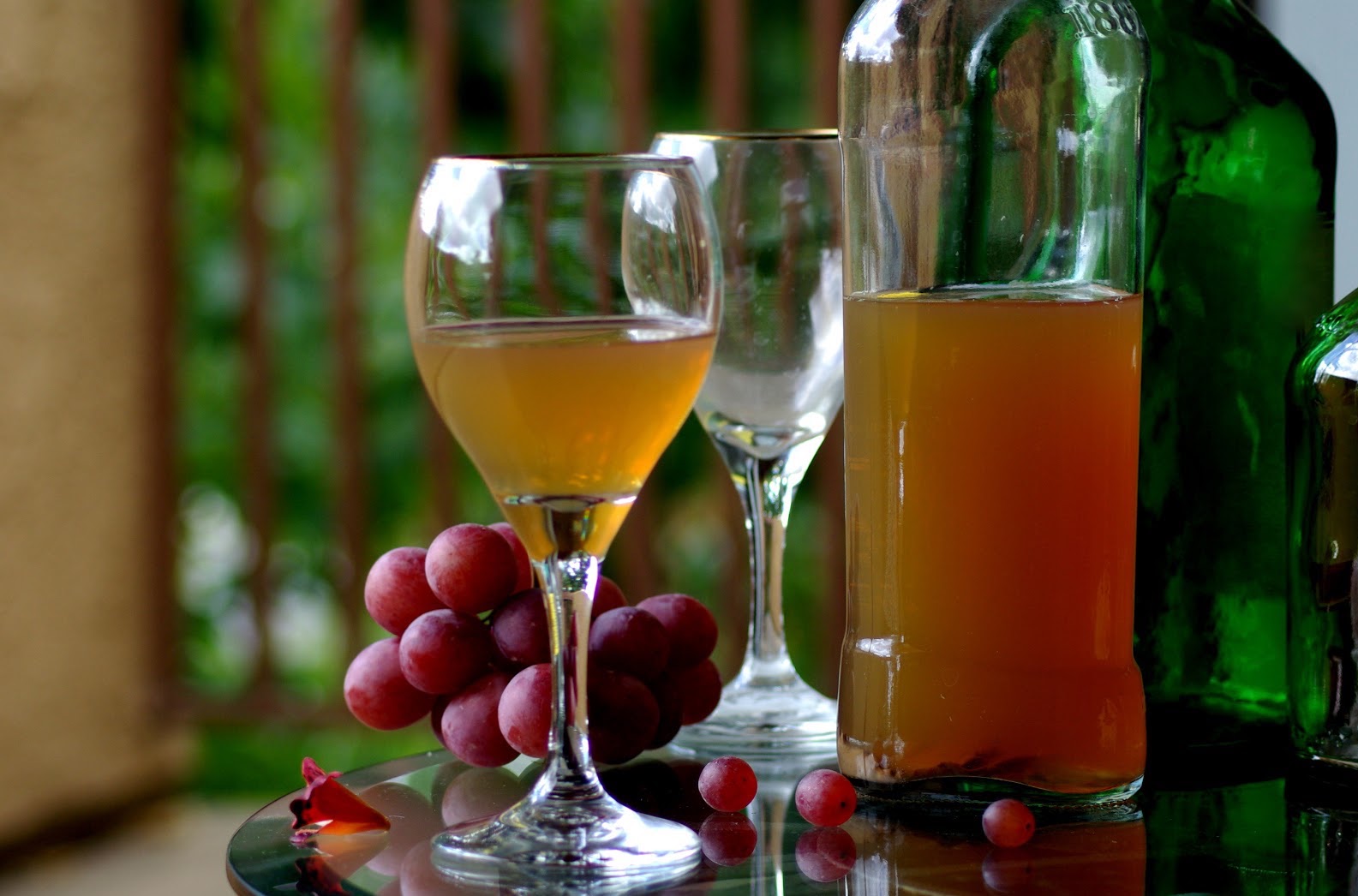

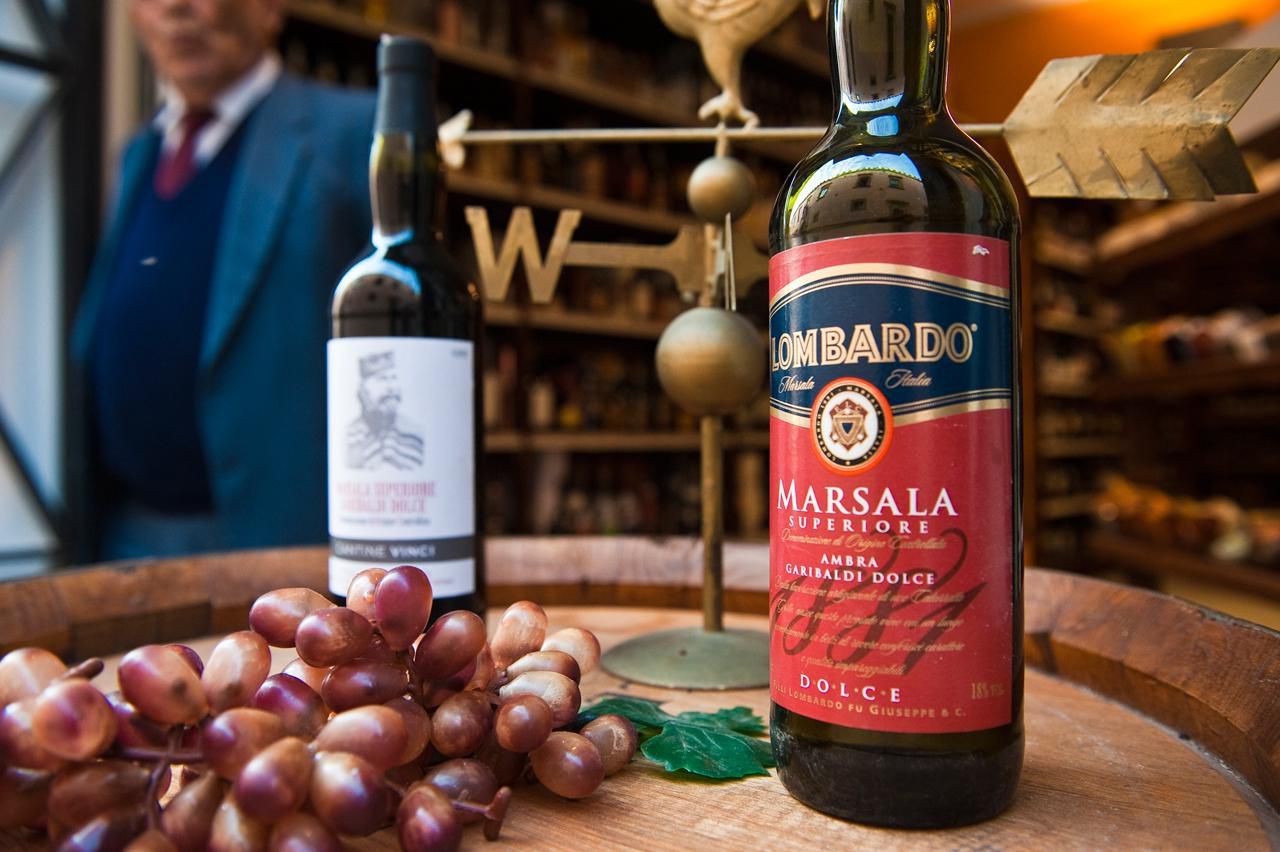
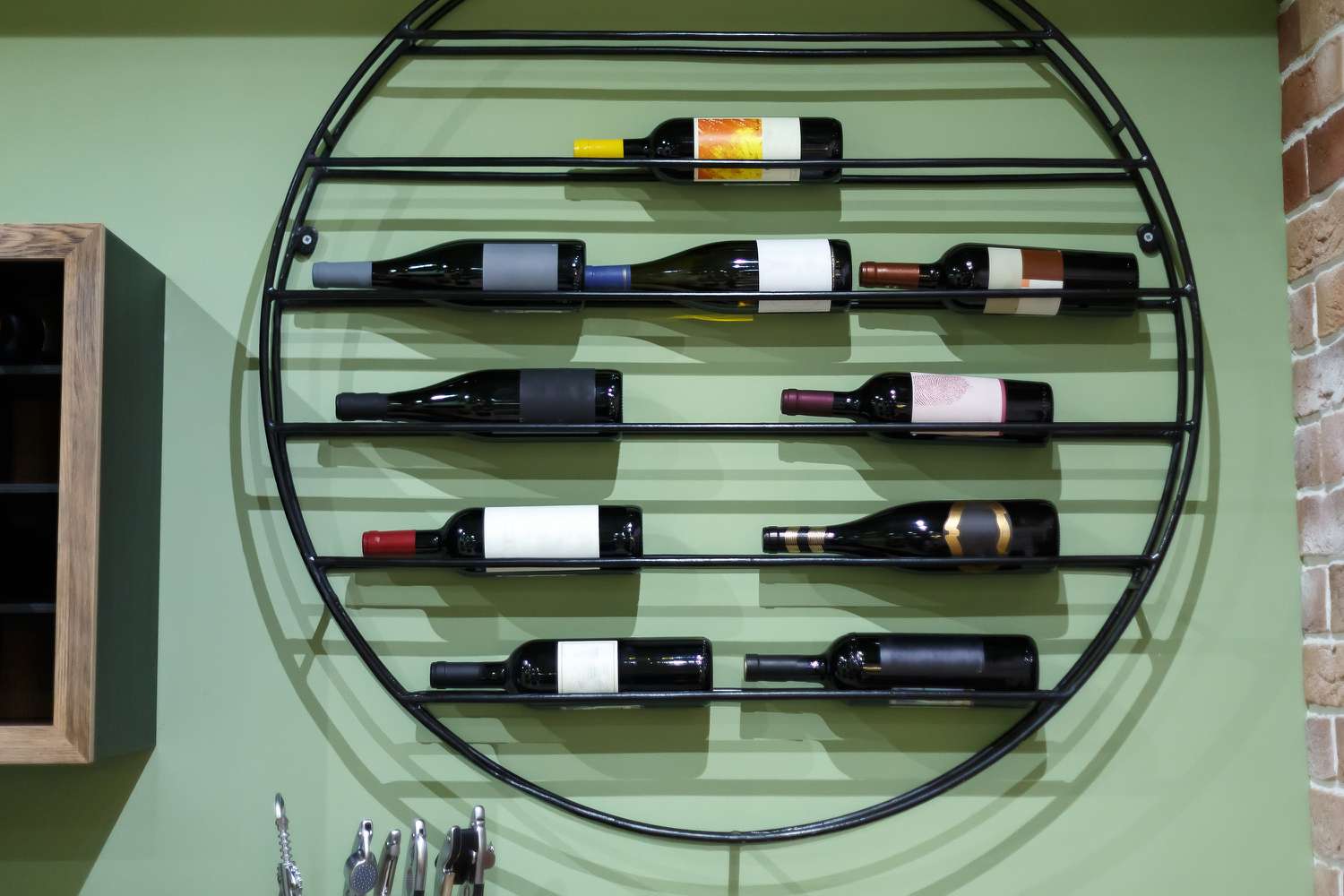
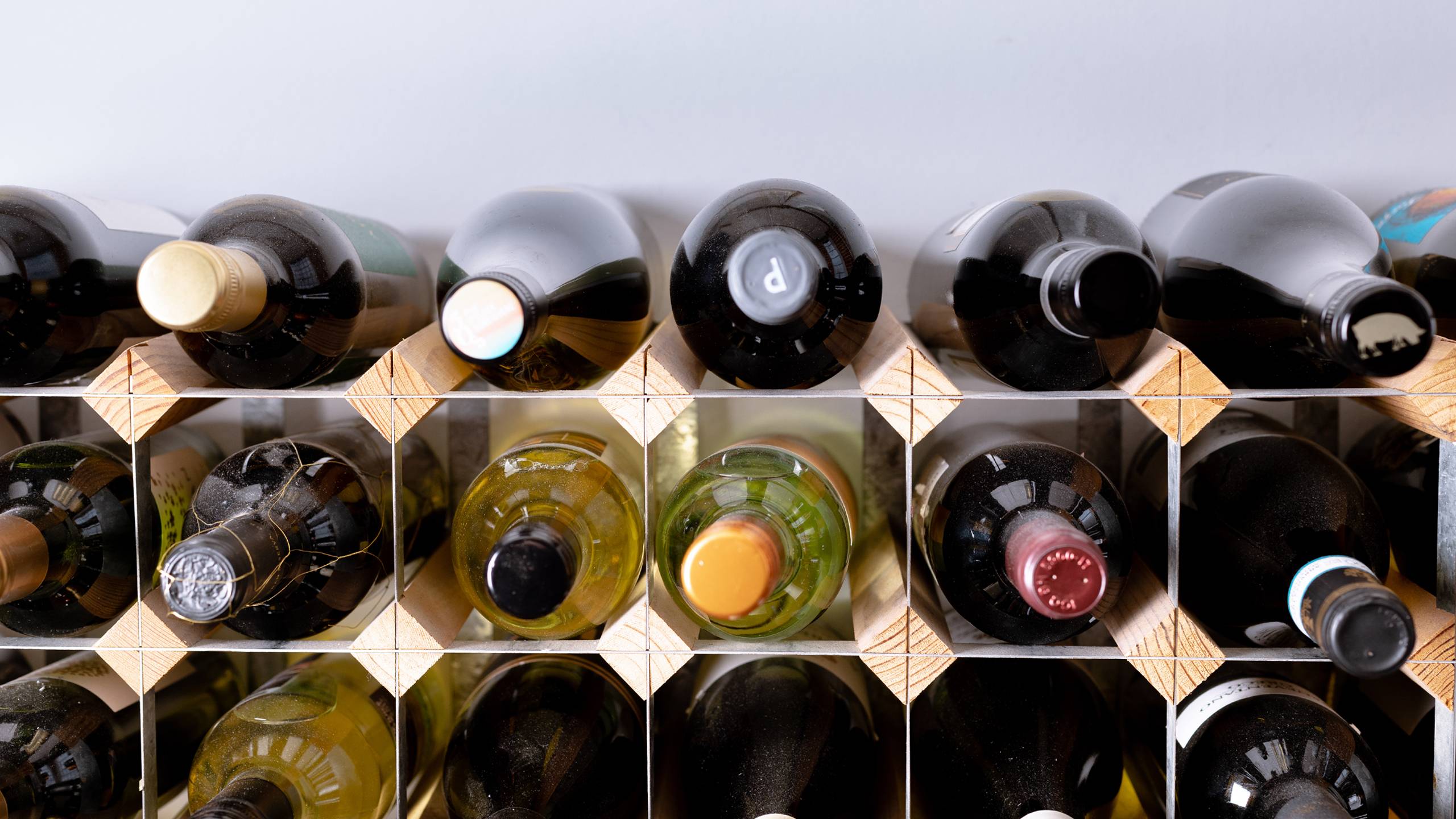
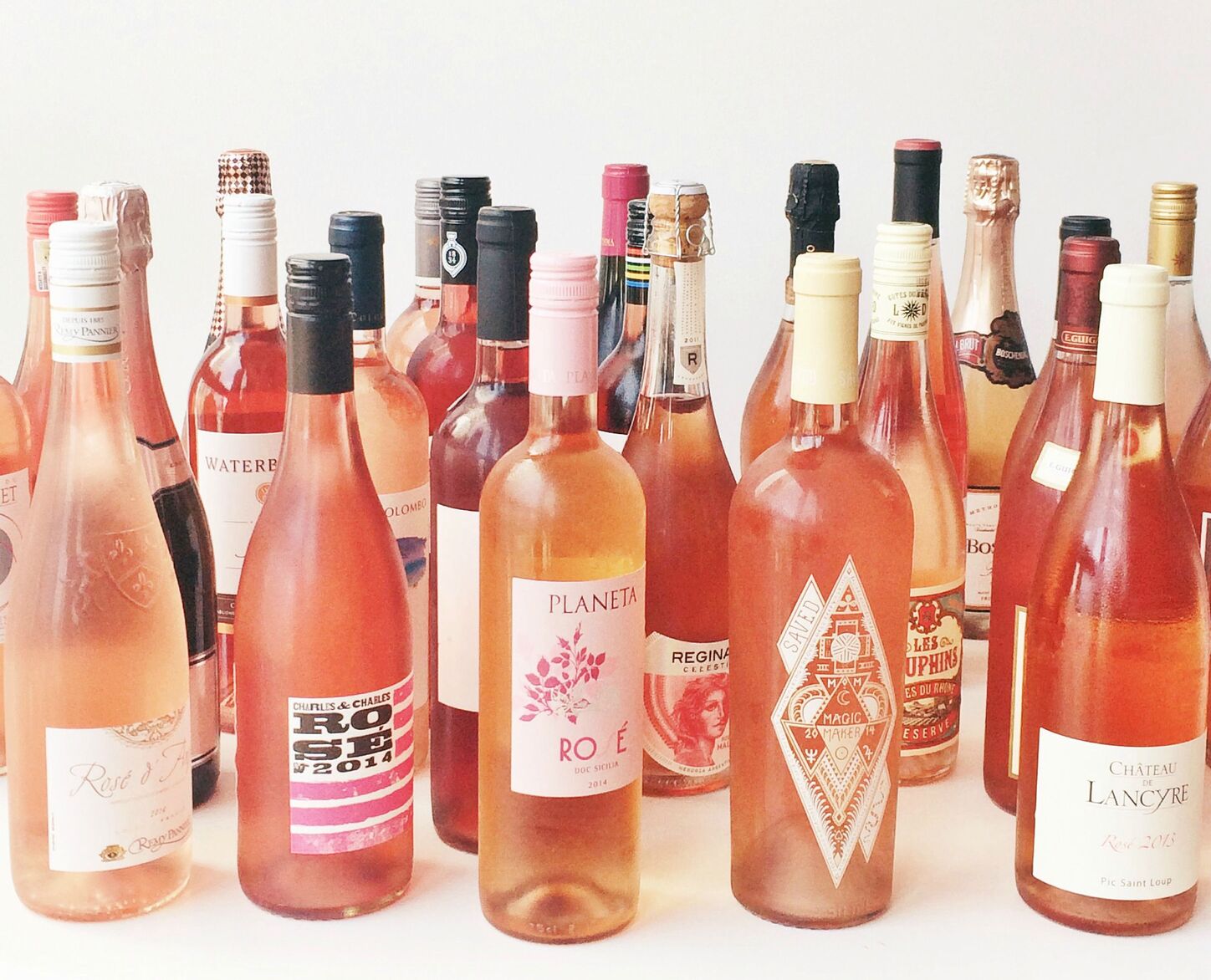
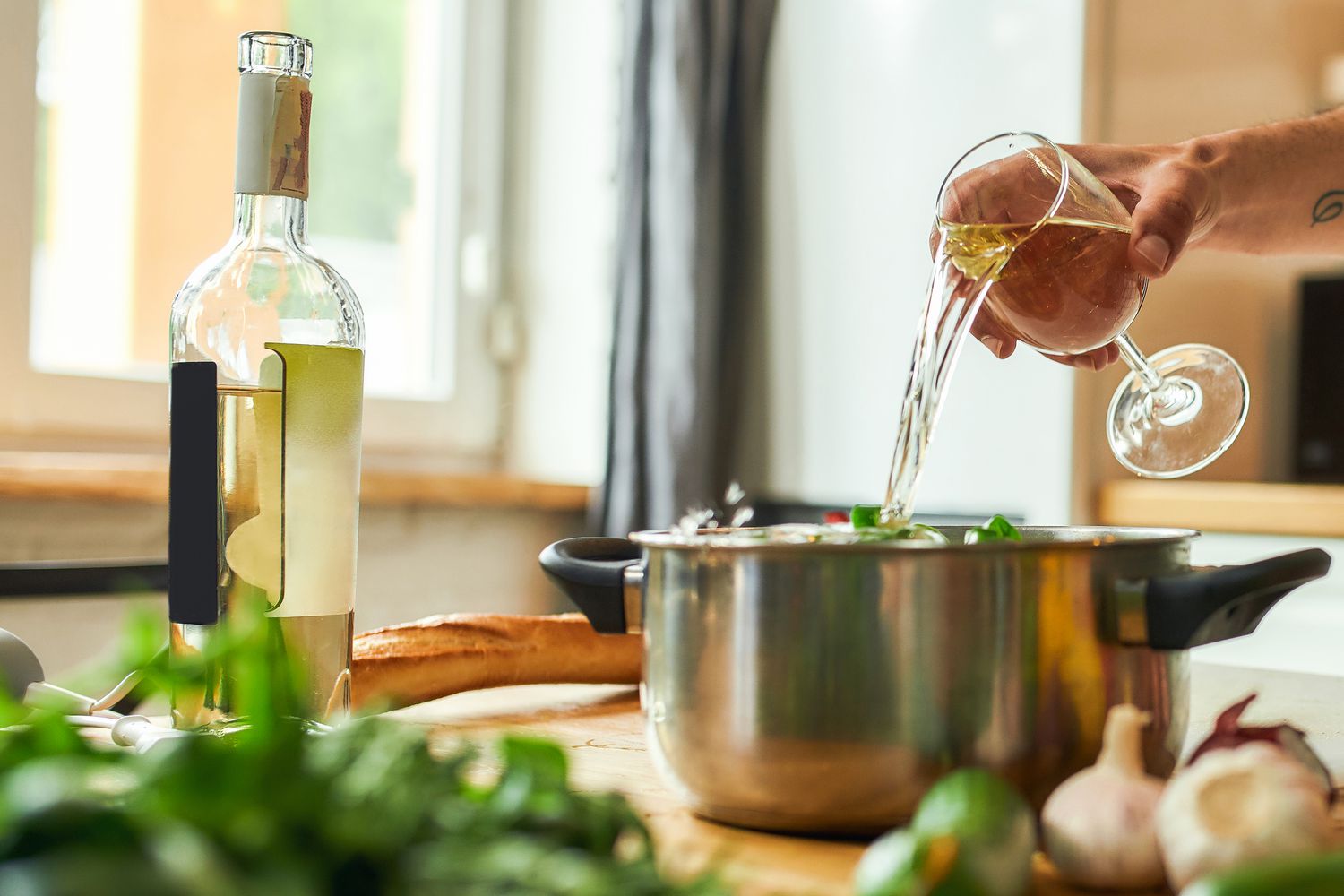
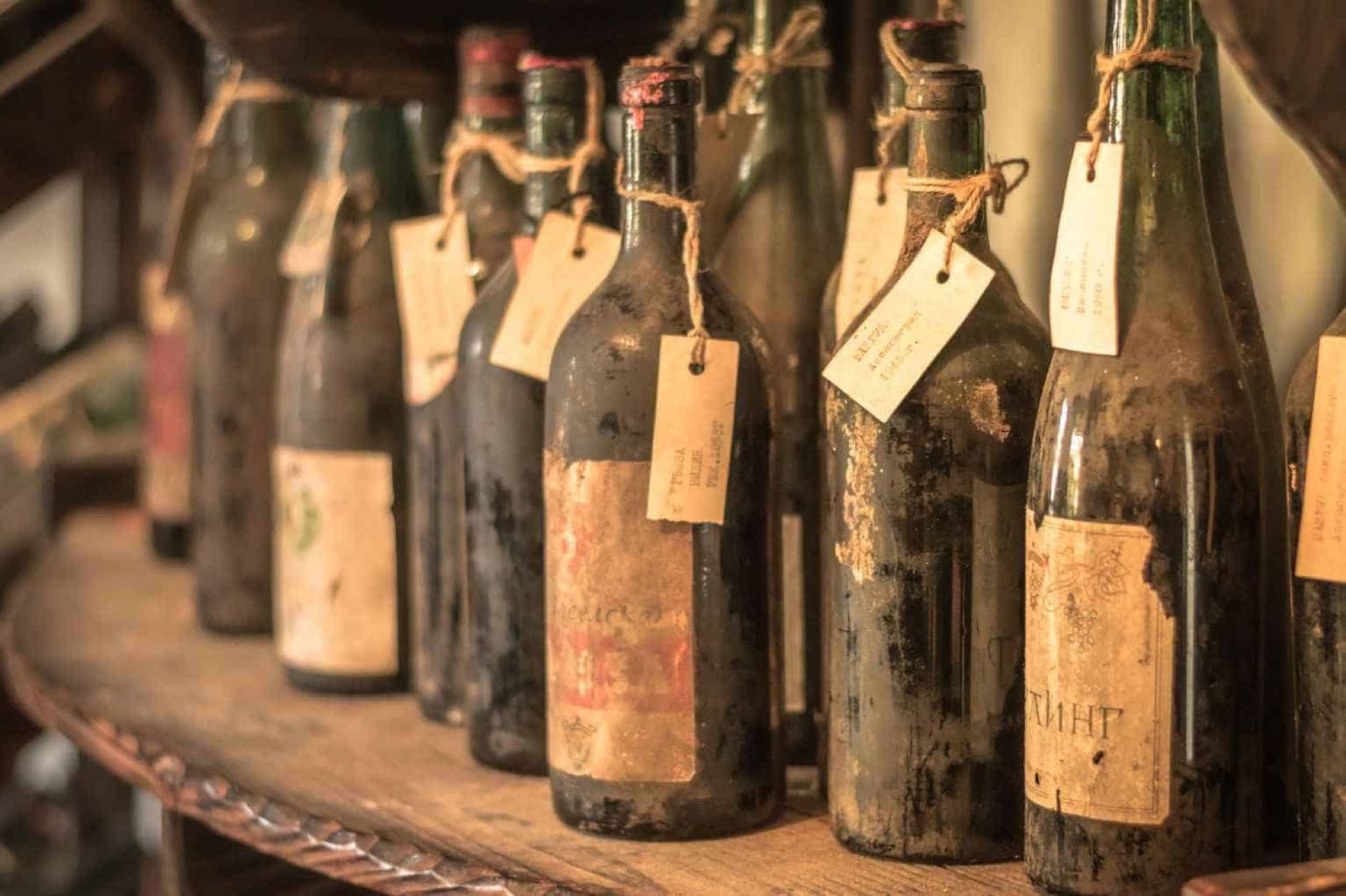
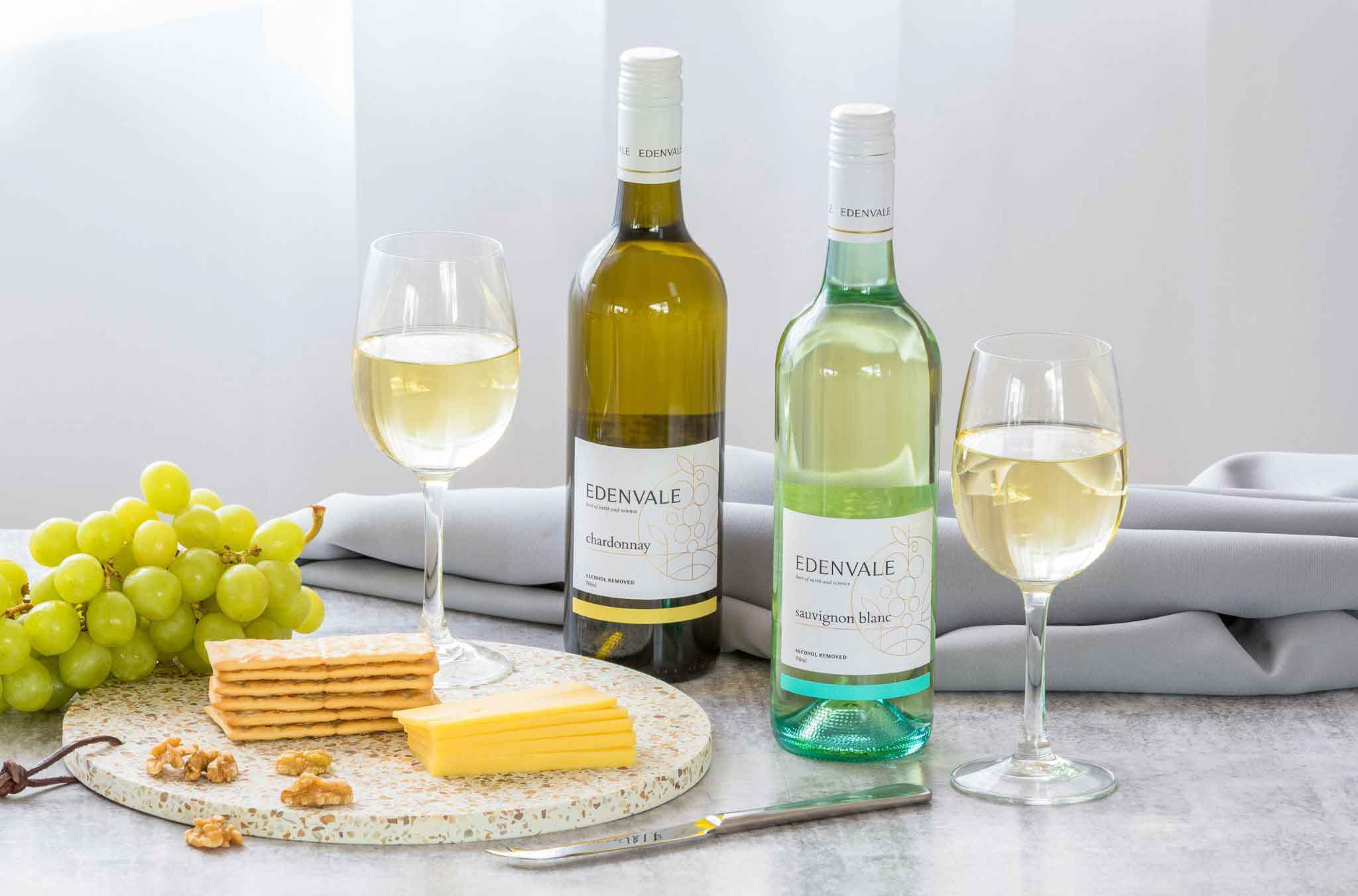
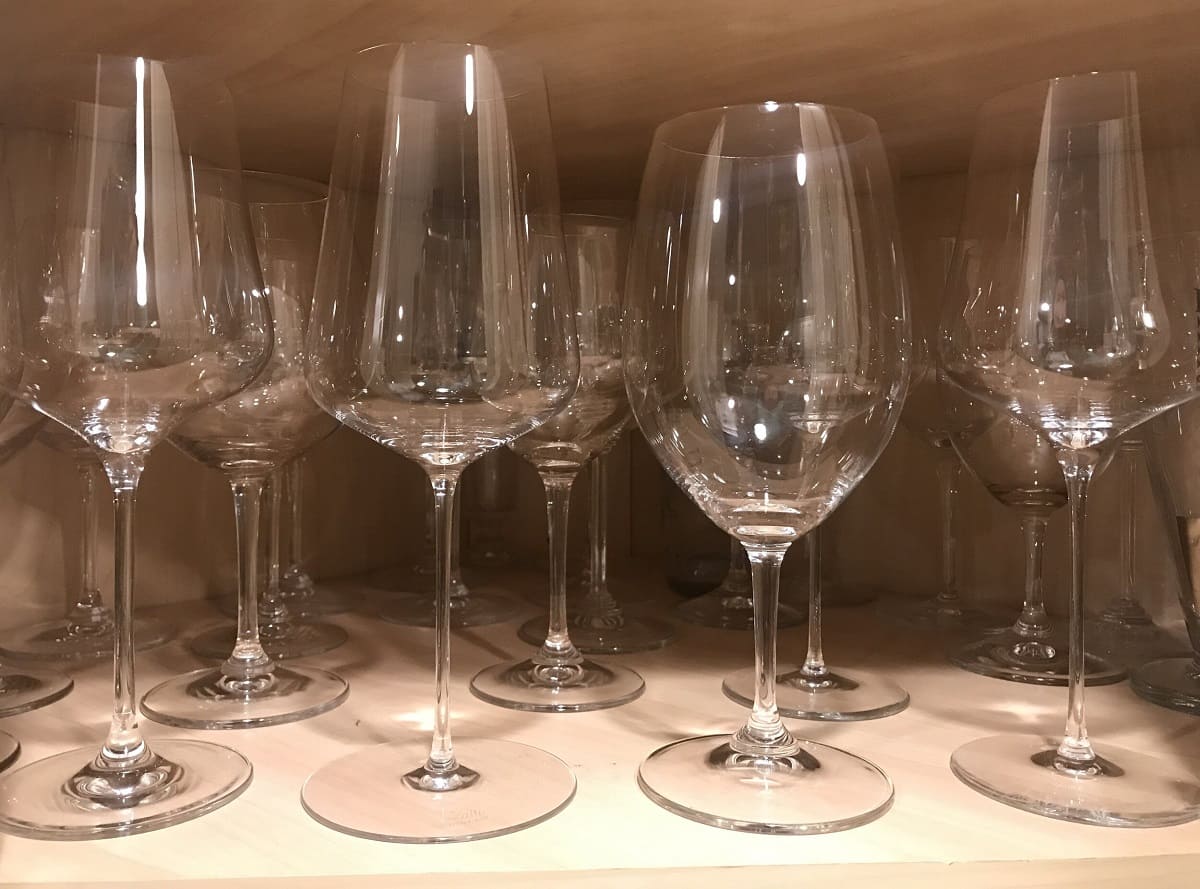

0 thoughts on “How To Store Wines”